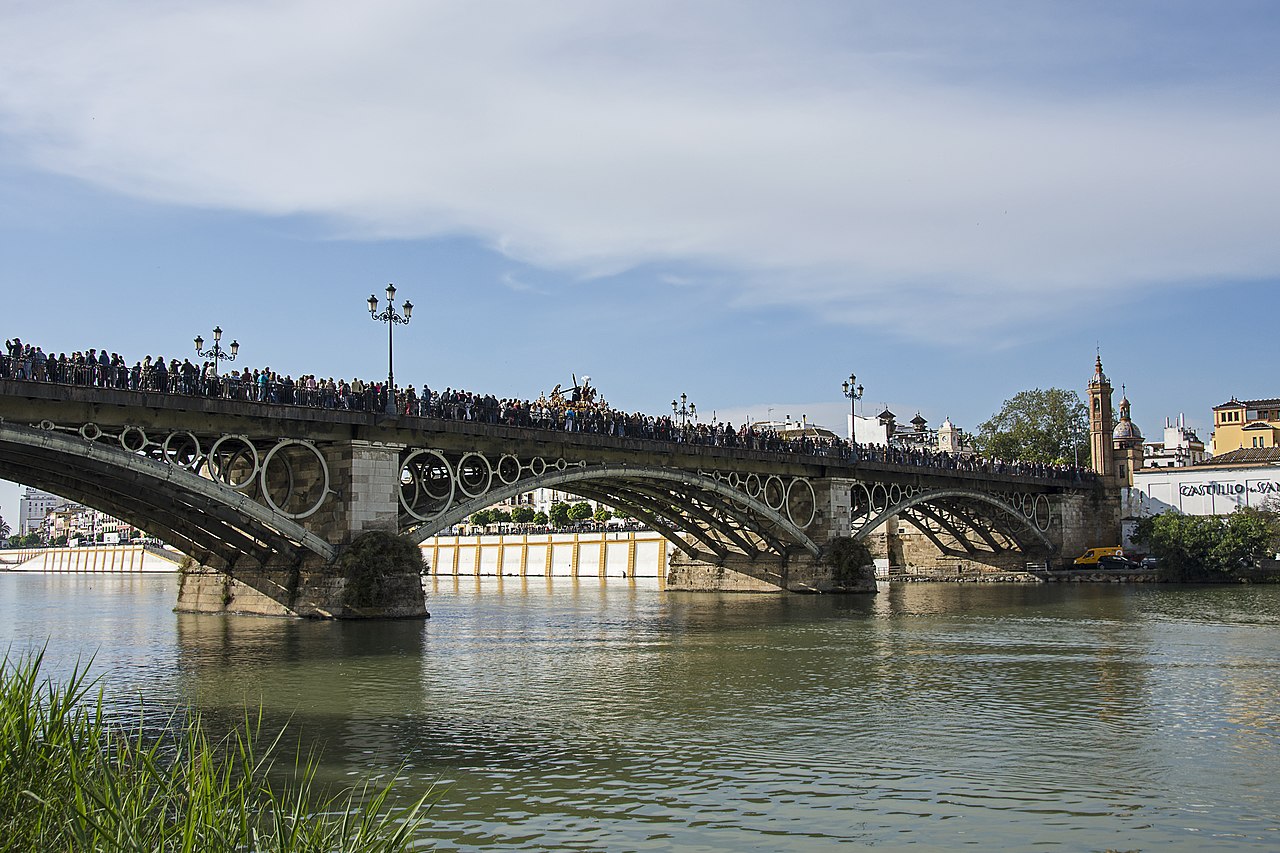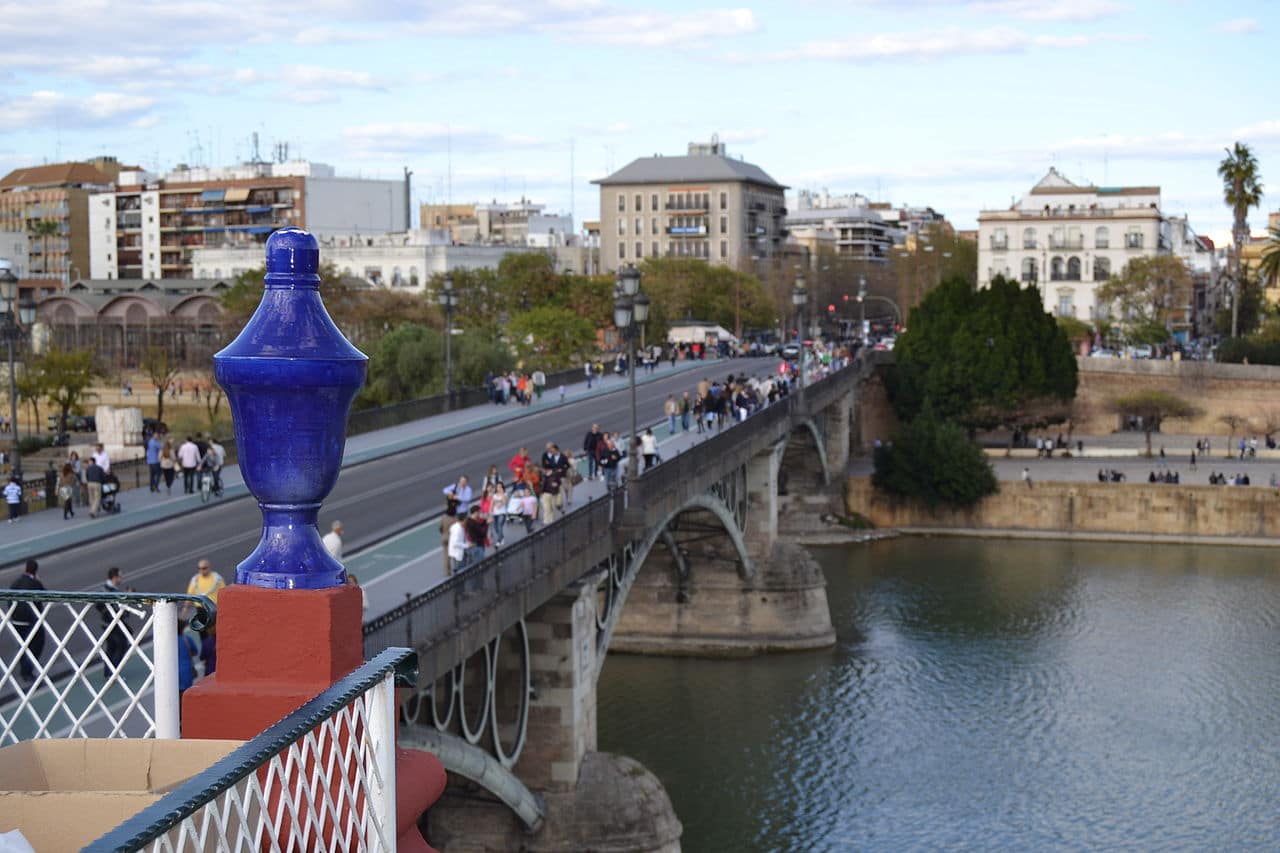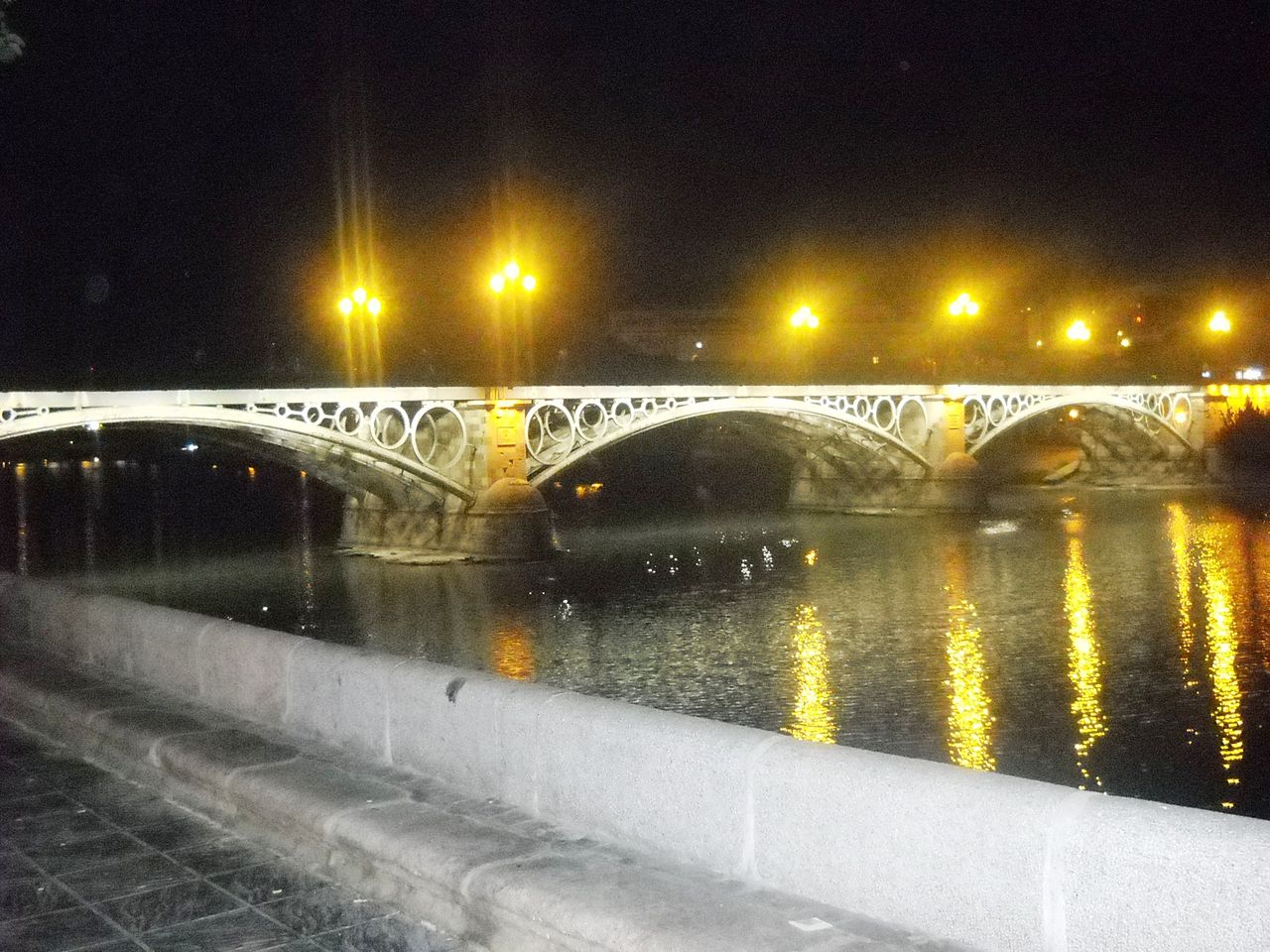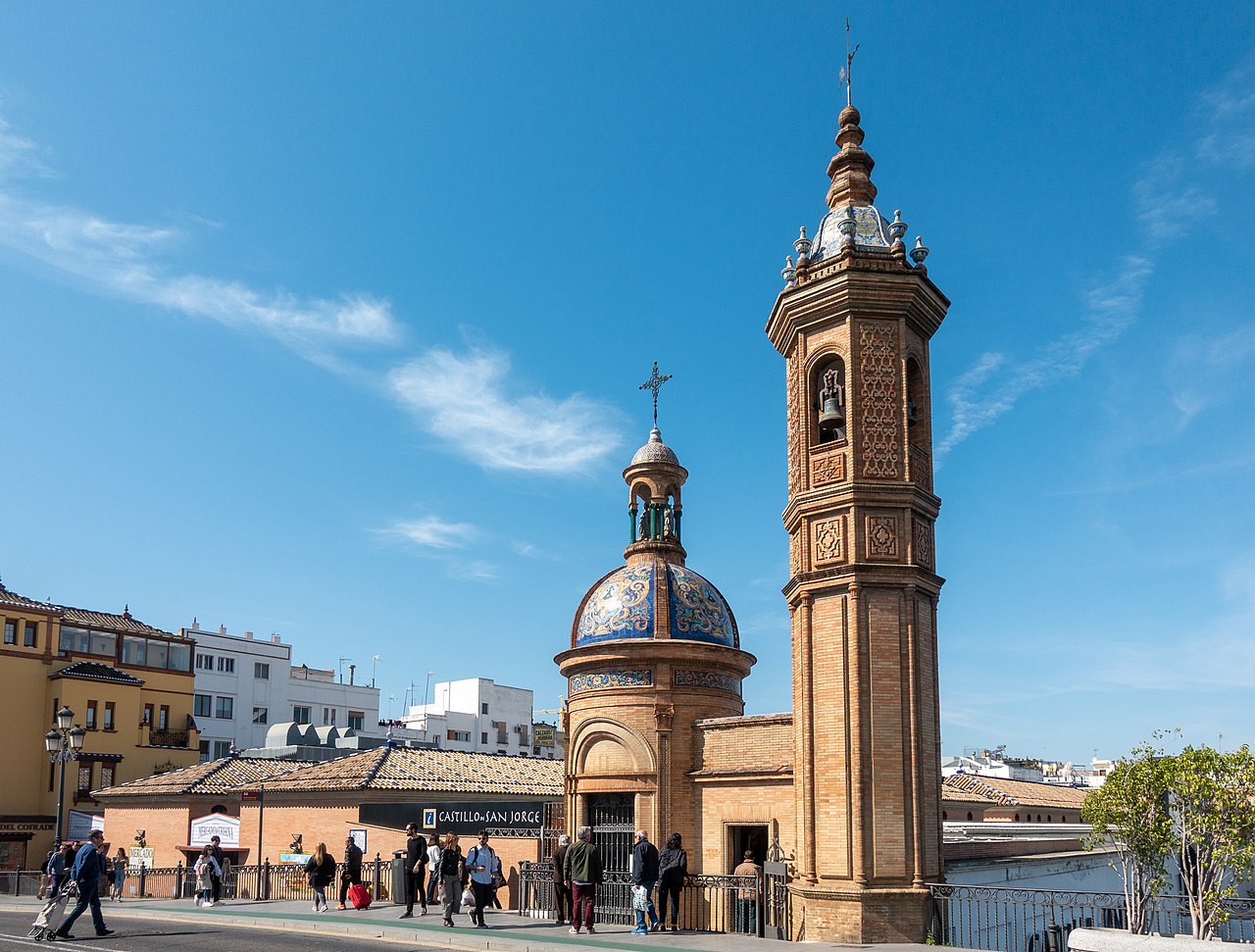
Triana Bridge
The Triana bridge is one of the symbols of the city of Seville, just as they are the Giralda or the tower of Gold. As its name suggests, it serves as a link between the center of the town and the beautiful neighborhood of Triana, overcoming the Guadalquivir river. And it is so popular that almost all tourists who visit the city of Seville cross it.
It has more than a hundred years of history during which it has been a silent witness to the development of Seville until it became the great city that it is today. Therefore, it is more than a feat of engineering. It is a great monument of the town. If you want to get to know this Sevillian symbol a little better, continue reading our article.
A little history of the Triana bridge
It was not until the XNUMXth century that a bridge was built to connect both banks of the Guadalquivir. The section of this that goes from Cordova Until Sanlúcar de Barrameda the only link between the two shores was the boats.
In the case of Seville, a bridge had not been built due to foundation problems at the bottom of the river. This was very sandy and soft. For this reason, the Muslims made, already in the twelfth century, a boat gangway exactly where the Triana bridge is today. And it should not be badly made, since it was maintained until the XNUMXth century itself.
As early as 1844, a public competition was held to choose the project of what was to be the Triana bridge. That of the French was chosen Gustave Steincher y Ferdinand bernardet, who had already worked on the construction of viaducts in Puerto de Santa María.

Triana bridge deck
His project was similar to that of the Austerlitz and Carrousel bridges in Paris. The construction would cost twelve million reais and would be paid for by means of a portazgo or tax on the carriages that crossed the viaduct. After not a few economic problems and the abandonment of Steinacher, the works culminated in 1852. It was inaugurated on February 23 of that year with the name of the Triana bridge or of Isabel II, in honor of the queen of Spain.
Since then, as we were telling you, it has remained the union of the center of Seville with the Triana neighborhood. And it has also suffered reforms and the occasional accident. The most serious took place in 1874, when the English steam Adela collided with him. The repair was entrusted to the engineer Nolasco de Soto and it had a cost of 723 pesetas.
Characteristics of the Triana bridge
This viaduct, which is National Monument since 1976 and the oldest in Seville, it was built in stone and iron. In fact, it is considered the oldest in Spain among those built with those materials. In fact, its platform rests on three iron arches that in turn are supported by sunken pilasters in the Guadalquivir. Each one of them is an arcade of light and has an extension of 43 meters. They are completed by a sailor's bow.
Each bay of these arches is formed by five parallel semi-elliptical sections that are joined with crosses fastened by screws. Likewise, the interior of these arches was filled with pine wood boards joined by a special bitumen.
However, those arches no longer supported the weight of the bridge. For this, there is currently an internal structure that does it, leaving the former as a decorative element.
For its part, the original deck of the Triana bridge was made of concrete on the road and stone and brick on the sidewalks. Rested on a cross iron platform that was attached to the armor.

Triana bridge at night
As decorative elements, the bridge has a railing on each side and with fernandino type street lamps throughout its extension.
The Chapel of Carmen
But more curious is the fact that at one of its ends (the one on the Triana side) it has a small chapel. Called by the Sevillians "the lighter" for its peculiar shape, its authentic name is chapel of Carmen. It was built by the architect Hannibal Gonzalez, to whom is equally due the magnificent Spain Square de la ciudad.
The reason for the construction of this chapel is also curious. When works were carried out to widen Triana avenue and improve access to the bridge, the Carmen chapel, which was located next to the food market, had to be demolished.
In order not to lose that Triana symbol, the City Council commissioned a new chapel that you can see today at the end of the bridge and which was finished in 1928. The construction is made of exposed brick and presents two towers joined by a rectangular body. The first is lower and ends in a ceramic dome. In turn, on this there is a temple that houses sculptures of Holy Fair y Saint Rufina next to the shield of the Order of Carmen. For its part, the other tower is taller, has an octagonal shape and has a bell tower at the top.
How to get to the Triana bridge
If you visit Seville, you are interested in knowing how to get to the Triana bridge. You can do it by city bus or metro. Even if you are out of town, you can use the ferrocarril. The lines of the latter that stop near the viaduct are C1 and C4.

Chapel of Carmen
As for busesLines 03, 27, EA, M-111, M-153 and M-159 have stops near the bridge. Finally, the line of metro You must take to get to the viaduct is the L1 and you have to get off at the bus stations. Jerez Gate or Cuba square.
In conclusion, the Triana bridge is a symbol from the city of Seville. Historic for being the oldest in Spain built in iron and stone, as we told you, it also has the curiosity of having a chapel in its structure. If you visit the Andalusian city, be sure to go see it. Especially nice it is at night, with the lighting reverberating over the Guadalquivir river, as you can see in one of the images in this article.